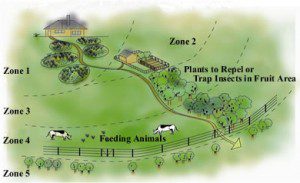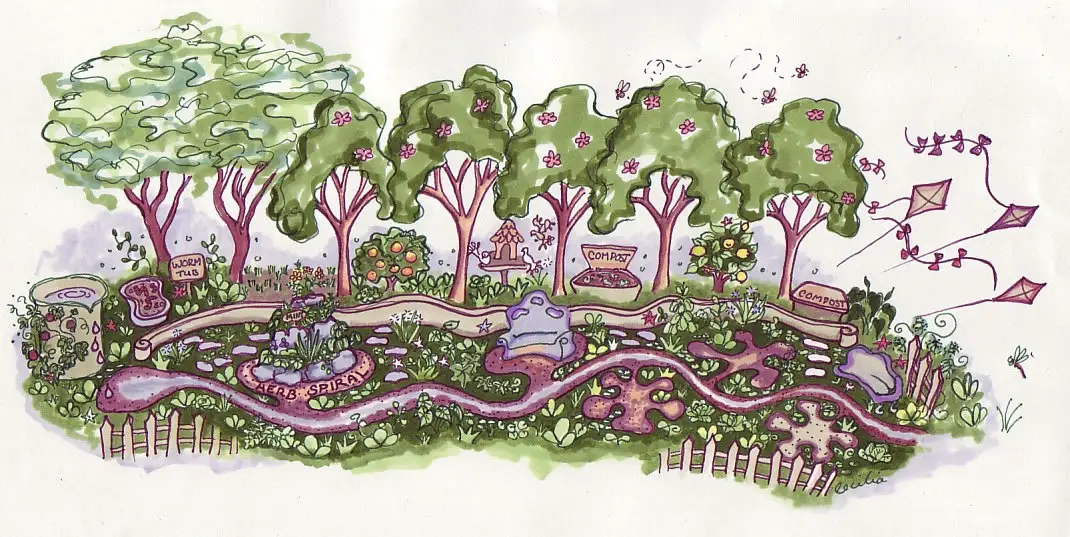| Online: | |
| Visits: | |
| Stories: |

| Story Views | |
| Now: | |
| Last Hour: | |
| Last 24 Hours: | |
| Total: | |
Permaculture – What Is It and Why Is It Important?
18th March 2015
By Phil Watt
Guest Writer for Wake Up World
Developed by Australians Bill Mollison and David Holmgren in the 1970’s, permaculture has spread wildly throughout the world. The term initially meant ‘permanent agriculture’, however it evolved to also represent ‘permanent culture’.
Permaculture is the ethical, scientific and synchronistic design of natural systems to ensure a sustainable philosophy of living. It also aims to facilitate abundance for the future of humanity by producing all the food and materials it needs on a local scale. At its core, permaculture is simply the collaboration of humans and nature in action.
Due to the unsustainable agricultural practices that we currently employ, permaculture is also an evidence-based solution to the self-destructive path we are on.
What is Permaculture?
Permaculture is working in conjunction with nature, not against it. It is the local production of all the materials each person needs, such as food, shelter and fuel. Its use of the land is the opposite of a monoculture, which is the hallmark of theharmful industrial-agriculture model. Instead it’s a polyculture, where a diverse range of vegetation and animals are utilised to support each other into abundance.
As a quick overview, a permaculture plot has five zones. The first is the most utilised and is therefore the closest to the residence, which contains vegetable and herb gardens that need continual maintenance. Zone two is where daily attention is still required, but not as often, such as with poultry pens and orchard trees. The third zone is less visited and generally reserved for self-feeding stock and seasonal crops. In zone four there are food and fuel options made available from the food forest and zone five is a natural area that is rarely visited.
The aim is to create systems that are ecologically-sound and economically viable, which provide for their own needs, do not exploit or pollute, and are therefore sustainable in the long term – Bill Mollison
 Once a permaculture farm is fully functioning, in principle nothing needs to be brought into the system as it supplies all of its own requirements. Food for humans, animals, soil and plants are produced by the plants and animals themselves. The sunlight and water that enters the property is captured in a way which maximises its potential, which is also obviously used for the plot’s energy requirements.
Once a permaculture farm is fully functioning, in principle nothing needs to be brought into the system as it supplies all of its own requirements. Food for humans, animals, soil and plants are produced by the plants and animals themselves. The sunlight and water that enters the property is captured in a way which maximises its potential, which is also obviously used for the plot’s energy requirements.
It has three core tenets, which is to care for the earth, care for the people and return of surplus. These tenets are self-explanatory. It also has twelve design principles, which I won’t go into here, but which provide a guiding template for developing each unique permaculture system.
Permaculture is a design science. It’s a system that supplies all the needs of humanity – all the basic needs and all the intricate needs – in a way that also benefits the environment – Geoff Lawton
Each area has layers, such as the canopy, understory, groundcover and vertical growing plants. The layers incorporate seasonal, annual and perennial plants too. Everything has multiple uses, such as chickens which provide food, prepare the soil and supply manure. Another example is that a specific plant is not just a food, but provides a particular role for the soil and other plants, as well as delivers organic material for the worm farm and to make compost.
Vegetation is planted in guilds, which is essentially a grouping of mutually beneficial plants. They can also include animals too. For example, a guild might contain a nitrogen-fixing legume for the soil, vegetation that attracts pollinator insects and repels harmful ones, shrubs that are great for chop-and-drop mulch and plants which are principally for food or aesthetic purposes.
When setting up a permaculture plot, it is important to adapt to local conditions. For example, living in an urban environment has its limitations, such as space, however it can be overcome by clever design. Different climates, particularly harsh ones, also provide a challenge; however highly successful projects have illustrated that the permaculture methodology can be achieved anywhere, including in desert, mountainous and snowy environments.
Previous articles by Phil Watt:
- Meditation in Action: How Daily Activities Can Naturally Induce Meditative States
- 8 Emotional Patterns That Can Disturb Our Inner Peace
- Finding Our Peace: The Art of Loving Our Experience
- A Day in the Life of Mindfulness
- Nurture Your Inner Child and Free Your Inner Guru
- Enlighten Up! – 10 Practical Ways to Enlightenment
- The New Age of a United Global Culture
- The Orchestra of Reality – a Journey through Science, Spirituality and Symbolism
- A Guide to Unity: Transcending the Illusion of Disconnection
- Matter vs. Spirit – A Guide to Participating in the Greatest Debate Ever
-
[FACEBOOK]: http://www.facebook.com/joinwakeupworld (An interactive community of over 1,700,000)
[PINTEREST]: http://pinterest.com/wakeupword/
[TWITTER]: http://twitter.com/joinwakeupworld
[YOUTUBE]: http://www.youtube.com/joinwakeupworld
[GOOGLE PLUS]: https://plus.google.com/
[WEBSITE]: http://wakeup-world.com




